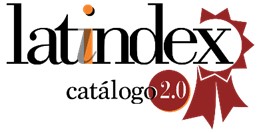Explorando os modelos de estudantes sobre amostragem e inferência com variáveis nominais
DOI:
https://doi.org/10.48489/quadrante.23655Palavras-chave:
variáveis categóricas, suscitar as ideias dos alunos, perspetiva de modelos e modelação, categorias nominais, formação inicial de professores, amostragemResumo
Fazer inferências sobre populações desconhecidas é fundamental no raciocínio estatístico. No entanto, pouca atenção tem sido dada às investigações empíricas sobre como e com que objetivo os alunos desenvolvem modelos de amostragem ao investigarem uma variável categórica cujos valores são nominais. Tendo por base a perspetiva de modelos e modelação, este artigo relata uma intervenção, durante a qual 25 professores em formação inicial foram solicitados a desenvolver um modelo de amostragem que pudesse ser usado para fazer inferências sobre o número de contas de cores diferentes e sobre a distribuição de contas de cores diferentes em populações de tamanhos diferentes. Por meio de uma análise temática, foram identificados três resultados principais sobre as características dos modelos dos estudantes acerca de amostragem e inferência com variáveis nominais: capturar todas as cores de baixa frequência na população; não sobrevalorizar as cores de baixa frequência na população; e formalizar as relações encontradas para fazer inferências. Os resultados põem em evidência várias questões sobre a compreensão dos alunos acerca da relação entre a representatividade da amostra e a variabilidade da amostra e suas consequências na produção de inferências.
Referências
Ärlebäck, J. B., & Doerr, H. M. (2014). Preserving students’ independence by encouraging students’ self-evaluation. In H. Silfverberg, T. Kärki, & M. Hannula (Eds.), Nordic research in mathematics education – Proceedings of NORMA14 (pp. 257–266). Turku, Finland: The Finnish Research Association for Subject Didactics.
Barbosa, J. C. (2006). Mathematical modelling in classroom: A socio-critical and discursive perspective. ZDM, 38(3), 293-301. https://doi.org/10.1007/BF02652812
Batanero, C., Begué, N., Borovcnik, M., & Gea, M. M. (2020). Ways which high-school students understand the sampling distribution for proportions. Statistics Education Research Journal, 19(3), 32-52. https://doi.org/10.52041/serj.v19i3.55
Batanero, C., Estepa, A., Godino, J. D., & Green, D. R. (1996). Intuitive strategies and preconceptions about association in contingency tables. Journal for Research in Mathematics Education, 27(2), 151–169. https://doi.org/10.5951/jresematheduc.27.2.0151
Ben-Zvi, D., Bakker, A., & Makar, K. (2015). Learning to reason from samples. Educational Studies in Mathematics, 88(3), 291-303. https://doi.org/10.1007/s10649-015-9593-3
Böcherer-Linder, K., Eichler, A., & Vogel, M. (2016). The impact of visualization on understanding conditional probabilities. Proceedings of the 13th International Congress on Mathematical Education. Hamburg, Germany. Retrieved from https://iase-web.org/documents/papers/icme13/ICME13_S1_Boechererlinder.pdf
Braun, V., & Clarke, V. (2006). Using thematic analysis in psychology. Qualitative Research in Psychology, 3, 77–101. https://doi.org/10.1191/1478088706qp063oa
Budgett, S., & Puloka, M. (2019). Making sense of categorical data – question confusion. In S. Budgett (Ed.), Decision making based on data. Proceedings of the satellite conference of the International Association for Statistical Education (IASE). Kuala Lumpur, Malasya. Retrieved from http://iase-web.org/documents/papers/sat2019/IASE2019%20Satellite%20114_BUDGETT.pdf
Casey, S., Albert, J., & Ross, A. (2018a). Developing knowledge for teaching graphing of bivariate categorical data. Journal of Statistics Education, 26(3), 197-213. https://doi.org/10.1080/10691898.2018.1540915
Casey, S., Hudson, R., & Ridley, L. (2018b). Students’ reasoning about associations of categorical variables. In M. A. Sorto, A. White, & L. Guyot (Eds.), Looking back, looking forward. Proceedings of the Tenth International Conference on Teaching Statistics (ICOTS10). Kyoto, Japan. Retrieved from https://iase-web.org/icots/10/proceedings/pdfs/ICOTS10_2E2.pdf?1531364243
Dodge, Y. (2008). The concise encyclopedia of statistics. Springer. https://doi.org/10.1111/j.1751-5823.2008.00062_25.x
Doerr, H. M., delMas, R., & Makar, K. (2017). A modeling approach to development of students’ informal inferential reasoning. Statistics Education Research Journal, 16(2), 86-115. Retrieved from https://iase-web.org/documents/SERJ/SERJ16(2)_Doerr.pdf
Doerr, H. M., & English, L. D. (2003). A modeling perspective on students’ mathematical reasoning about data. Journal for Research in Mathematics Education, 34(2), 110-136. https://doi.org/10.2307/30034902
Engel, J. (2010). On teaching bootstrap confidence intervals. In C. Reading (Ed.), Proceedings of the Eighth International Conference on Teaching Statistics. Ljubljana, Slovenia. International Statistical Institute. Retrieved from http://iase-web.org/documents/papers/icots8/ICOTS8_4B2_ENGEL.pdf?1402524970
Everitt, B. S., & Skrondal, A. (2010). The Cambridge dictionary of statistics. Cambridge University Press. https://doi.org/10.1111/j.1751-5823.2011.00149_2.x
Franklin, C., Kader, G., Mewborn, D., Moreno, J., Peck, R., Perry, M., & Scheaffer, R. (2007). Guidelines for assessment and instruction in statistics education (GAISE) report: A pre-K–12 curriculum framework. American Statistical Association. Retrieved from https://www.amstat.org/asa/files/pdfs/GAISE/GAISEIIPreK-12_Full.pdf
Hestenes, D. (2010). Modeling theory for math and science education. In R. Lesh, P. L. Galbraith, C. R. Haines, & A. Hurford (Eds.), Modeling students' mathematical modeling competencies: ICTMA 13 (pp. 13-41). Springer. http://doi.org/10.1007/978-1-4419-0561-1_3
Hesterberg, T. (2006). Bootstrapping students' understanding of statistical concepts. In G. Burrill (Ed.), Thinking and reasoning with data and chance. Sixty-eighth National Council of Teachers of Mathematics Yearbook (pp. 391-416). Reston, VA, USA: National Council of Teachers of Mathematics.
Lehrer, R., & Schauble, L. (2010). What kind of explanation is a model? In M. K. Stein & L. Kucan (Eds.), Instructional explanation in the disciplines (pp. 9-22). Springer. http://doi.org/10.1007/978-1-4419-0594-9_2
Lesh, R. A., & Doerr, H. M. (Eds.). (2003). Beyond constructivism: Models and modeling perspectives on mathematics problem solving, learning, and teaching. Lawrence Erlbaum Associates.
Lipson, K. (2003). The role of the sampling distribution in understanding statistical inference. Mathematics Education Research Journal, 15(3), 270-287. https://doi.org/10.1007/BF03217383
Manyika, J., Chui, M., Brown, B., Bughin, J., Dobbs, R., Roxburgh, C., & Hung Byers, A. (2011). Big data: The next frontier for innovation, competition and productivity. McKinsey Global Institute.
McLean, J. A. (2015). Eliciting bootstrapping: The development of introductory statistics students’ informal inferential reasoning via resampling. Dissertation. https://surface.syr.edu/etd/396
Organisation for Economic Co-operation and Development (OECD). (2013). PISA 2012 assessment and analytical framework. Mathematics, reading, science, problem solving and financial literacy. OECD. https://doi.org/10.1787/19963777
Saldanha, L., & Thompson, P. (2002). Conceptions of sample and their relationship to statistical inference. Educational Studies in Mathematics, 51(3), 257-270. https://doi.org/10.1023/A:1023692604014
Shaughnessy, J. M. (2007). Research on statistics learning and reasoning. In F. K. Lester (Ed.), Second handbook of research on mathematics teaching and learning (pp. 957–1009). Information Age Publishing.
Watson, J. M., & Callingham, R. (2014). Two-way tables: Issues at the heart of statistics and probability for students and teachers. Mathematical Thinking and Learning, 16(4), 254–284. https://doi.org/10.1080/10986065.2014.953019










